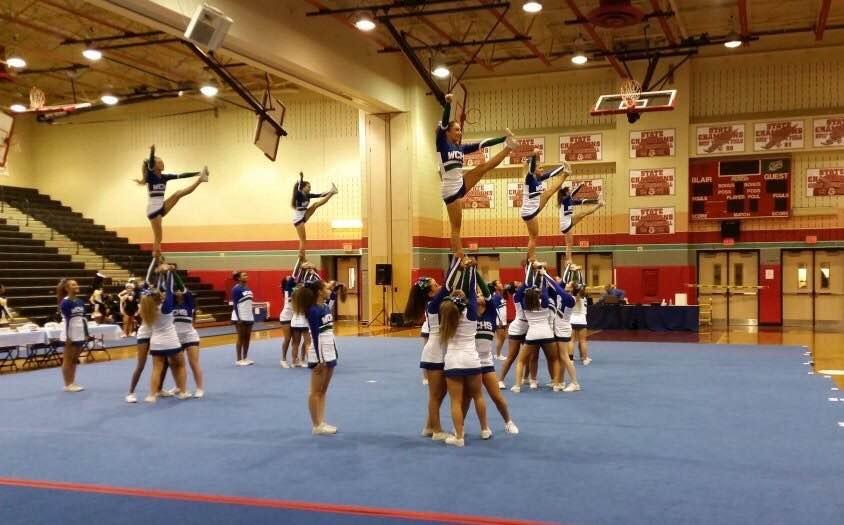Ooh, I Think I Found Myself a Real Sport: Cheerleading
During competitions, cheerleaders perform stunts that include lifting people up, flying through the air and contorting their bodies.
November 24, 2015
Jousting. Quidditch. Cheese rolling. Rock-Paper-Scissors. All of these activities are now defined as and accepted as genuine sports. So why is cheerleading still on the bubble?
The dictionary defines a sport as, “an athletic activity requiring skill or physical prowess and often of a competitive nature.” Cheerleading fulfills this definition in all facets: hoisting up the flyer, doing 10 consecutive back-flips and performing with intense team comradery and teamwork, among others.
The cheer competitions are one of the highest energy athletic competitions in high school. On top of this, cheer is a skill sport. It is not something any person can do. It takes practice and hard work to compete at a high level.
Still, many people ignore the facts and are adamant that cheerleading is not a sport, but rather a recreational activity.
According to a male junior who will go by the name of Bill, cheer exists for the sole purpose of entertainment and not to compete like “real” sports do. Bill’s argument against cheerleading is that flipping and holding someone up requires no hand-eye coordination and anyone can “dance” if they put in an hour of practice, unlike soccer or lacrosse which require years of perfection to become talented.
“Cheer isn’t a sport because it is scored by judges and is based on their discretion,” Bill said. “Winners and losers change based on different people’s judging.”
Another common argument is the purpose of the professional cheerleader. While NBA and NFL players are paid millions to play in front of huge crowds, cheerleaders are paid minimally to turn their backs to the actual game being played in hopes of enhancing spirit and activity within the fan base.
According to senior cheer co-captain Stefanie Baarman, cheerleading requires skill, teamwork, hard work and motivation and can be as competitive as other sports.
At CHS, cheerleaders must memorize and perfect routines for hours, the same way sports like basketball and football players memorize and perfect plays for their games.
“When people say [cheerleading is] not a sport, I just tell them they can’t do half the things cheerleaders do,” Baarman said. “It’s more than people just dancing around.”
On top of this, every time a cheerleader does a backflip, or is thrown into the air to do a flip or a twirl, they risk getting injured. One of the most common injuries among cheerleaders is a concussion.
Along with Baarman, senior co-captain Dana Gilbertson agrees that cheerleading should be considered a sport by everyone because it takes serious dedication and hard work.
“The strength it takes to physically lift someone and have them contort their bodies in the air isn’t something someone can just have the ability to do overnight,” Gilbertson said.
The sheer ability to tumble and fly took Baarman and Gilbertson years to perfect to be able to compete in the school county championships. The two-hour daily practices and hours spent with a club cheer team year-round debatably surpass the amount of time and work some athletes put in to their respective sports.
Not only is it offensive when people refer to cheerleaders as “unathletic,” but it also causes them to feel as though their hard work goes unnoticed and unappreciated. Their practice and work deserve recognition. So if you want to tell a cheerleader that cheer isn’t a sport, remember the facts.
If cheerleading isn’t a sport, then why is it under CHS Athletics?
“We deserve recognition for our athleticism and to not be made fun of for what we love to do,” Gilbertson said. “In no way are we not a sport.”


